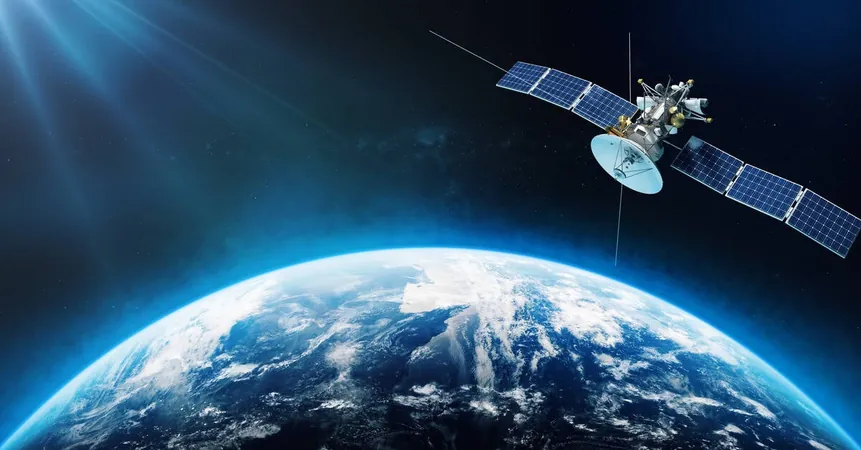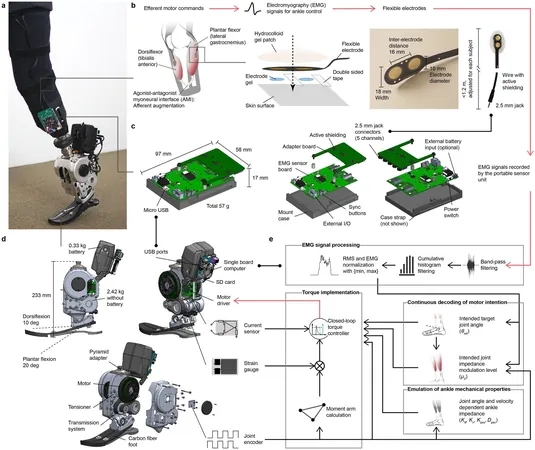
The Future of Connectivity: Satellite-to-Smartphone Services Set to Launch in 2025
2025-01-02
Author: Ming
Analysis
Satellite technology is on the brink of revolutionizing communication, with the first satellite constellations designed to provide direct commercial services to standard smartphones launched this year. This game-changing innovation is anticipated to reshape the telecommunications landscape, with the United States leading the charge.
Market Growth and Projections
As the integration of satellite services with traditional cellular networks gradually takes form, analysts predict a steep increase in revenue, projected to reach $16.8 billion by 2028. This growth trajectory suggests that satellite connectivity will surpass conventional satellite broadband, which is currently generating approximately $7.9 billion, fueled by providers like Starlink, and will outpace IoT satellite connectivity.
CCS Insight, a respected research firm, points to three primary applications for satellite internet: broadband, direct-to-cell phone connectivity, and IoT services. Notably, while satellite broadband is estimated to grow to $13.3 billion by 2028, the revenue from direct-to-cell phone satellite services is predicted to skyrocket from negligible levels to eclipse broadband revenues by 2027, a trend expected to dramatically transform global communication.
Industry expert Vaishali Purohit emphasizes that while the current revenue from these satellite services is modest when viewed against the entire telecom industry, they represent a significant long-term opportunity.
Diverse Strategies: Modified vs. Unmodified Devices
CCS distinguishes between two primary methods of providing direct satellite services: modified devices, which require specialized hardware, and unmodified smartphones, which are expected to dominate the market.
The modified device approach is exemplified by Apple, which introduced satellite messaging capabilities in the iPhone 14, allowing users to send emergency messages when cellular networks are unavailable. Other technology giants, like Google with its Pixel 9, and Chinese brands such as Huawei and Xiaomi, are also exploring satellite connectivity, albeit with a focus limited to domestic consumers.
On the other hand, the unmodified device market is projected to be substantially larger, reaching 8.8 billion units by 2028 compared to 1.5 billion for modified devices. This shift signifies a pivotal moment where smartphones that comply with recent non-terrestrial network standards (defined in 3GPP Releases 17 and 18) will become foundational to global connectivity.
Partnerships and Market Predictions
Key players in satellite service include Lynk, AST SpaceMobile, and SpaceX's Starlink, all of which operate low Earth orbit (LEO) constellations. While Lynk currently provides limited active services in locations like the Cook Islands, North America—particularly the United States—emerges as a ripe market for satellite operators due to vast regions with inadequate cellular coverage.
Starlink, in partnership with T-Mobile, is poised to lead the market, with predictions of commercial direct-to-device messaging capabilities almost becoming a reality soon. Notably, this partnership has successfully demonstrated phone-to-phone video calls using satellite connections, heralding an exciting future for satellite-aided communication.
While regions like Europe already boast robust telecom infrastructure, making satellite services less necessary, Australia presents another exciting opportunity. The vast country faces challenges with mobile coverage, prompting companies like Telstra and Optus to partner with satellite operators like Starlink to expand services.
Conclusion: The Dawn of a New Era in Connectivity
As we approach 2025, the advent of direct-to-cell satellite services represents a seismic shift in how we access communication. With the goal of connecting the unconnected—specifically, the estimated 350 million people globally without reliable internet access—this technology promises to break down barriers and provide opportunities in emerging markets. While satellite links are expected to complement traditional networks rather than replace them, their potential for transforming global connectivity is limitless.
Stay tuned as this groundbreaking technology takes off, shaping how we connect in a digital world!



 Brasil (PT)
Brasil (PT)
 Canada (EN)
Canada (EN)
 Chile (ES)
Chile (ES)
 Česko (CS)
Česko (CS)
 대한민국 (KO)
대한민국 (KO)
 España (ES)
España (ES)
 France (FR)
France (FR)
 Hong Kong (EN)
Hong Kong (EN)
 Italia (IT)
Italia (IT)
 日本 (JA)
日本 (JA)
 Magyarország (HU)
Magyarország (HU)
 Norge (NO)
Norge (NO)
 Polska (PL)
Polska (PL)
 Schweiz (DE)
Schweiz (DE)
 Singapore (EN)
Singapore (EN)
 Sverige (SV)
Sverige (SV)
 Suomi (FI)
Suomi (FI)
 Türkiye (TR)
Türkiye (TR)
 الإمارات العربية المتحدة (AR)
الإمارات العربية المتحدة (AR)